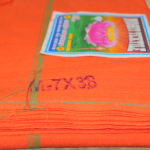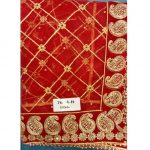GAAP requires that assets and liabilities must be broken out into current and non-current categories on a balance sheet. This allows the financial statement user to see what assets will be used and what liabilities will come due in the current year or current operating cycle. There are several factors in a company’s OC, and an operational cycle may assist in identifying a company’s financial status. The difference between the two calculations is that NOC subtracts the accounts payable period from the first. This is done because the NOC is only concerned with the period between paying for merchandise and receiving payment from its sale.
Inventory days are also an indicator of stock movement inside the organization. Debtor’s exceptional days are frequently regarded as one of the most important indicators for analyzing product demand and the importance of a specific product in comparison to its contemporaries. The cash is not collected immediately in a credit sale; rather, it is received according to the arrangement negotiated with the distributors or retail outlets. They usually pay quickly when there is a high demand for the product from the consumer, and vice versa. The higher the operating cycle, the lower the liquidity will be because more time elapses before cash is obtained. For example, businesses like airlines operate on longer cycles due to their reliance on expensive aircraft and employees who often work around the clock.
This time gap is called technically called as ‘operating cycle’ or ‘working capital cycle’. Let’s imagine that Robert is a pastry shop owner who is attempting to gauge how efficiently things are going in his business. He will have to determine the operational cycle of his business to accomplish this. This indicates that the cycle would begin as soon as he starts paying for the items, supplies, and components necessary to manufacture different cakes and delicacies.
- A cash cycle shows the businesses how they may control their working capital.
- For example, if its operating cycle is short, it suggests the company was able to execute a speedy turnaround.
- In contrast, a company with a longer OC will require more capital to keep operations running.
This is shown on the company’s balance sheet, whereas the cost of products sold is shown on the income statement. An effective operational process helps businesses by improving their cash flow, which in turn has a positive effect on other aspects of their business. Reducing costs while also increasing speed and improving quality can be beneficial to business owners. Increased profits are often the end result of running a business more efficiently. When the finished goods are sold on credit terms receivables balances will be formed. The need for working capital arises because of time gap between production of goods and their actual realization after sales.
Operating Cycle Calculation Example
The length of a company’s operating cycle is dictated by a number of factors, including the payment terms a company extends to its customers and those extended to the company by its suppliers. If a company is given more time to pay its suppliers for inventory, it can reduce its operating cycle by delaying the outlay of cash. On the other hand, if a company gives its customers more time to pay for goods received, it can extend its operating cycle, as the company will have to wait longer to get its cash. A shorter operating cycle indicates that a company’s cash is tied up for a shorter period of time, which is generally more ideal from a cash flow perspective.
An operating cycle refers to the number of days it takes for a company to convert its investment in inventory, accounts receivable (A/R), and accounts payable (A/P) into cash. The operating cycle of a company consists of time period between the procurement of inventory and the collection of cash from receivables. The operating cycle is the length of time between the company’s outlay on raw materials, wages and other expenses and inflow of cash from sale of goods.
- Over 1.8 million professionals use CFI to learn accounting, financial analysis, modeling and more.
- This means that it would take a retailer an entire year to sell its inventory.
- Inventory turnover demonstrates the number of times a company has sold or replaced inventory in a given time frame.
When a company invests in inventory, its cash is tied up until the items in question are sold. It’s therefore in a company’s best interest to maintain as short an operating and cash cycle as possible, as doing so can maximize liquidity and minimize the costs involved in storing inventory. Conversely, long operating cycle means that current assets are not being turned into cash very quickly. Companies with longer operating cycles often have to borrow from banks in order to pay short term liabilities.
One must divide crediting purchases by the median accounts receivable to find a firm’s receivables turnover. Inventory turnover demonstrates the number of times a company has sold or replaced inventory in a given time frame. However, you can also calculate the ratio by dividing the cost of products sold by the average inventory. Hence, the cash conversion cycle is used interchangeably with the term “net operating cycle”.
Importance of the Operating Cycle
Slack collection policies will tie-up funds for long period, increasing length of operating cycle. The knowledge of operating cycle is essential for smooth running of the business without shortage of working capital. The working capital requirement can be estimated with the help of duration of operating cycle. The longer the operating cycle, the larger the working capital requirements. If depreciation is excluded from expenses in the operating cycle, the net operating cycle represents ‘cash conversion cycle’.
What is your current financial priority?
Understanding a company’s operating cycle can assist assess its financial health by predicting whether or not it will be able to pay off any creditors. The term “operating cycle” refers to the duration between the time when a company purchases inventory and the time when the company realizes sales. In other words, it is the time a business takes to purchase inventory stock, convert it into finished goods, and then sell it in the market. The operating cycle is a very important factor in the assessment of the operational efficiency of any business.
Changes in government policies like taxation, import restrictions, credit policy of central bank etc. will have impact on the length of operating cycle. Working capital is the life blood of any business, without which the fixed assets are inoperative. Working capital circulates in the business, and the current assets change from one form to the other. Cash is used for procurement of raw materials and stores items and for payment of operating expenses, then converted into work-in-progress, then to finished goods. The days needed for a business to receive inventory, sell the inventory, and collect money from the sale of the inventory is referred to as an operating cycle (OC).
What is the Operating Cycle?
For instance, a company will get payments at a consistent pace if its operational cycle is shorter. The quicker a business makes money, the more capable it will be of paying off any obligations due or growing as necessary. It represents the period from the initial outlay of cash for inventory to the collection of cash from the sale of the resulting products or services.
Meaning of Operating Cycle
The net operating cycle and the operational cycle are the terms that usually confuse us. The net operating cycle is the money conversion cycle or cash cycle that shows how long it takes a business to earn money from the sales of stock. The cycle formula is very important as it is useful in assessing a company’s operational efficiency.
A shorter operating cycle is preferable since it indicates that the company has sufficient cash to sustain operations, recover investments, and satisfy other obligations. In contrast, a longer operating cycle indicates that the company requires more cash to maintain operations. An efficient operational process can also help reduce other costs like marketing, finance, etc. This is calculated by dividing 365 with the quotient of cost of goods sold and average inventory or inventory turnover. The Operating Cycle is calculated by getting the sum of the inventory period and accounts receivable period.
My Accounting Course is a world-class educational resource developed by experts to simplify accounting, finance, & investment analysis topics, so students and professionals can learn and propel their careers. If your operating cycle is too protracted, you may need more working capital to meet your existing obligations. In the next step, we will calculate DSO and process costing by dividing the average A/R balance by the current period revenue and multiplying it by 365. At the start of the calculation, the sum of DIO and DSO represents the operating cycle – and the added step is subtracting DPO. The articles and research support materials available on this site are educational and are not intended to be investment or tax advice.
The difference between the two formulas lies in NOC subtracting the accounts payable period. This is done because the NOC is only concerned with the time between paying for inventory to the cash collected from the sale of inventory. An Operating Cycle (OC) refers to the days required for a business to receive inventory, sell the inventory, and collect cash from the sale of the inventory. This cycle plays a major role in determining the efficiency of a business. The operating cycle of every industry and related business entity is different from the other industry. The operating cycle of a retailer is the time between the purchase of merchandise inventory and later selling the same.
















